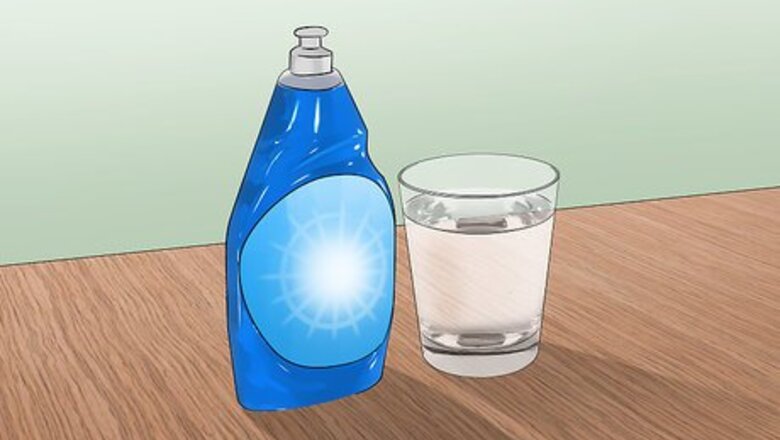
views
Washing with Soap and Water
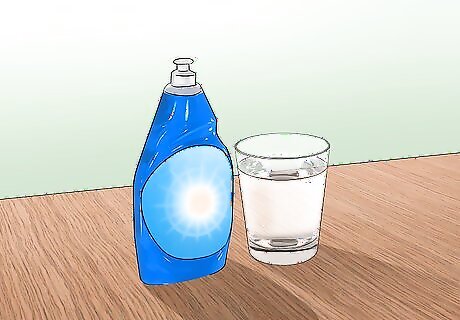
Use soap and water to clean most items that can be submersed in water. Mild soap and water can be used to clean most any rose gold items. It's safe for use on stones and various types of metals. It can be tricky to rinse off completely, however, so avoid using it on items like watches that you cannot get really wet to rinse thoroughly.
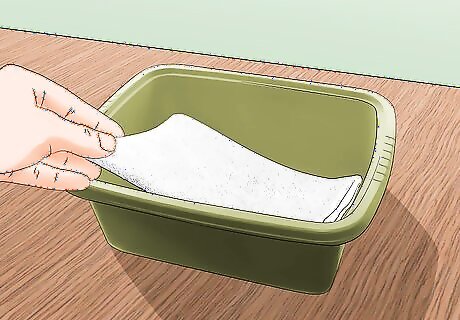
Line a clean dishpan or shallow bowl with a clean hand towel. The point of the towel is protect your jewelry by giving it something to sit on while it soaks. If you skip this step, the jewelry might roll around in the bottom of the pan and get scratched. Any clean towel is fine as long as it covers the bottom of the bowl and still leaves enough room for you to add enough soapy water to cover the jewelry.
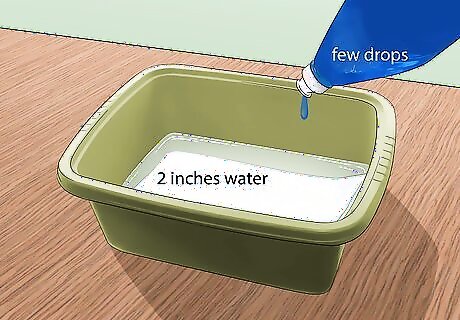
Add about 2 inches (5.1 cm) water and a few drop of dish soap. The water should be warm, but not too hot so that it’s uncomfortable for you to put your hands in. After you add the dish soap, just swish the water around with your hands to mix it up.Tip: Any type of dish soap will work in most cases, but if your jewelry has organic, porous stones like pearls or opals, you should skip the soap altogether and use only warm water.
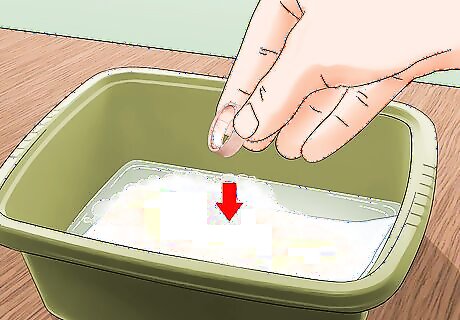
Lay your jewelry gently in the bowl so it’s completely submerged. Carefully put your jewelry into the bowl and onto the hand towel. If you are cleaning a lot of jewelry, spread it out evenly so that none of it is stacked on top of each other.
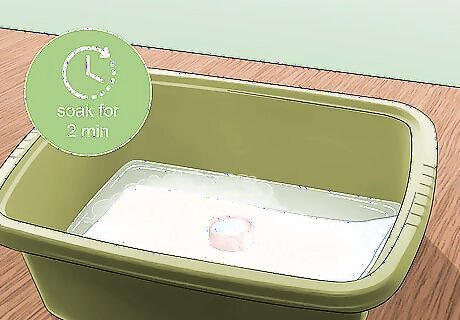
Soak the jewelry in the soapy water for at least 2 minutes. Leave the jewelry in the water without touching it for a couple minutes. Most of the oils from your skin that were dulling your jewelry can be broken down after just a few minutes of soaking. If the jewelry is particularly dirty, you can leave it soaking for a few more minutes.
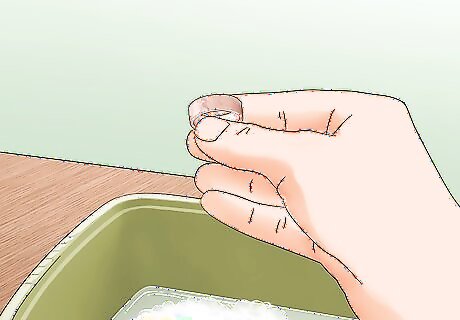
Remove the jewelry from the soapy water and rub it clean. Unless your jewelry is very dirty, you can rub it clean using just your fingers. Carefully take the jewelry out and rub it between your thumb and forefinger, buffing away any lingering dirt or oils. If the jewelry is very soiled, you can use a very soft brush to clean it. Opt for a very soft toothbrush or a makeup brush to prevent scratching the surface of the gold.
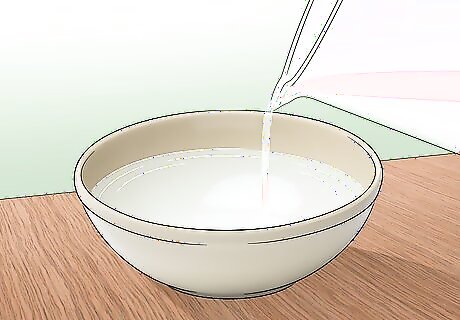
Fill a small bowl or cup with clean, lukewarm water. You only need to use a bowl big enough to hold the jewelry you are washing. If you are just washing one piece, you can use a coffee mug or small glass.
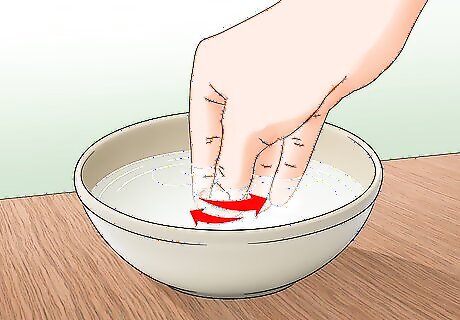
Swish the jewelry around in the water to remove the cleaning solution. Using clean hands, move the water and the jewelry around in the bowl to get all the soap or cleaning solution off of it. Keep doing that until it no longer feels slimy or filmy. Swishing the water is especially necessary if you are cleaning jewelry with small crevices, filigrees, or stone settings. Rushing the clean water over the jewelry will help to get into those small areas.
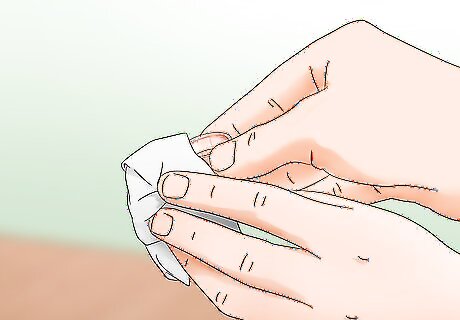
Dry the jewelry by rubbing gently with a lint-free cloth. Use a really soft cloth, like those used for cleaning eyeglasses, to dry all the water from the jewelry. Regular cotton towels or paper towels are too abrasive and can scratch the surface of the gold, creating a dull finish.
Cleaning with Vinegar and Salt
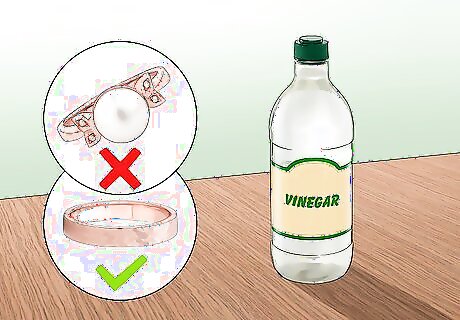
Use vinegar and salt to clean jewelry without organic, porous stones. If your jewelry has pearls, opals, sapphires, rubies, or other porous stones, you want to steer clear of a harsh and corrosive cleaner like vinegar. Diamonds, morganite, or jewelry without stones are fine to subject to quick cleaning with vinegar.
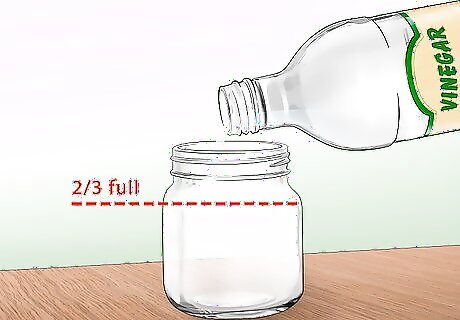
Add a few ounces of vinegar to small jar. Choose a baby food jar or other small jar with a lid. Pour white distilled vinegar into the jar until it is about ⅔ full. Don't worry about exact measurements—just put enough in the jar to completely cover the item that you want to clean. You only want to use white vinegar. Don’t substitute another vinegar that you have in the pantry.
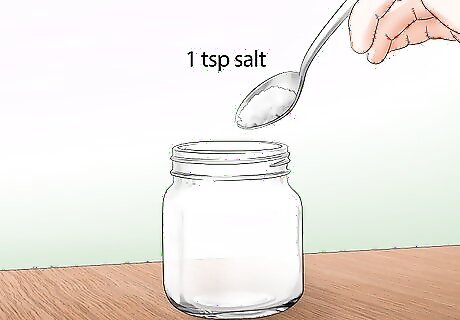
Mix in table salt until it no longer dissolves. Add table salt, 1 teaspoon (4.9 ml) at a time. Shake or stir the salt into the vinegar and then look at the bottom of the jar. If all the salt dissolved and there is nothing in the bottom, add more salt and mix again. Keep doing that until you notice that the salt is no longer dissolving. Mixing salt and vinegar creates a chemical reaction that removes tarnish and causes the rose gold to shine.
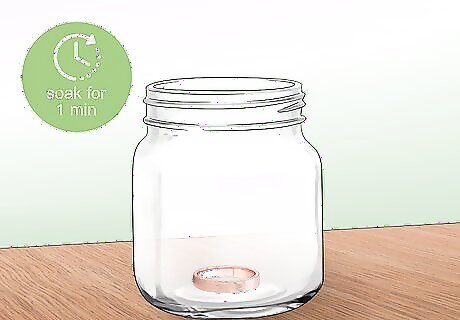
Dunk your jewelry in the vinegar and salt solution for up to 1 minute. The vinegar and salt solution is highly acidic and corrosive, so don’t leave it soaking very long. For a quick clean on a piece that is not very soiled, just dunk it for a few seconds. The chemical reaction works very quickly. If you leave the jewelry in for longer than a minute, the solution will began to degrade the copper in the rose gold and cause it to tarnish.
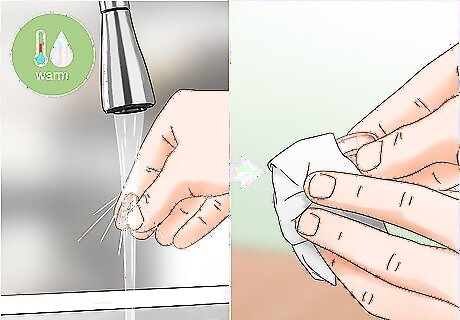
Rinse off the vinegar solution immediately in clean, lukewarm water. The solution is acidic and can affect the quality of your gold if you leave it on for too long. After just a few seconds of soaking, rinse the gold well, making sure to remove all traces of the solution. Then, wipe dry with a lint-free cloth.
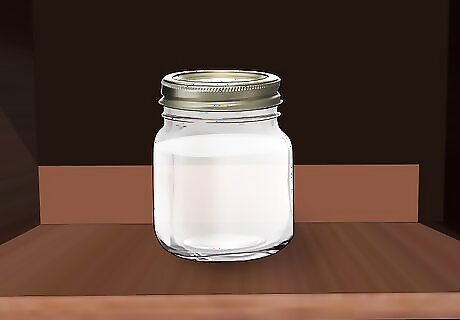
Keep the jarred solution in a cupboard or under your kitchen sink. Close the jar and keep it somewhere accessible. Then, any time you notice your jewelry is a little dull or dingy, just pop it in there for a few seconds. You can reuse the same solution for several months.
Using Commercial Cleaners
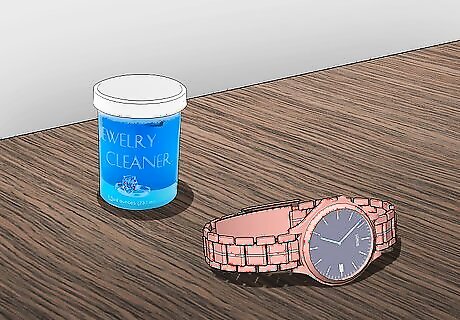
Use a jewelry cleaner made specifically for rose gold for your non-submersibles. Don't use soap or a vinegar solution to clean watches or other rose gold items that cannot be submersed in water because it will be difficult to wash away those cleaners. Ask a jeweler or shop around online for a jewelry cleaner marked safe for rose gold.
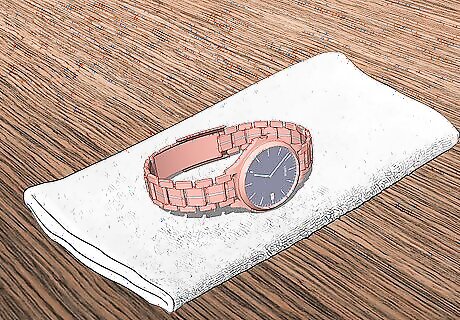
Put down a lint-free cloth on your work surface to prevent scratches. If you are trying to clean a watch or other rose gold item that you cannot soak in a liquid cleaner, first make a work area that will protect the surface of the item. Lay a microfiber or lint-free cloth down on the table or counter before you begin.
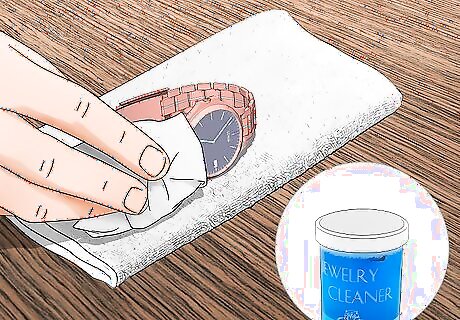
Apply the jewelry cleaner to the rose gold as directed on the packaging. Be sure to read the directions well before you begin to avoid damaging item. Commonly, the cleaner is applied with a cotton swab and left to soak for a minutes before being rubbed away.
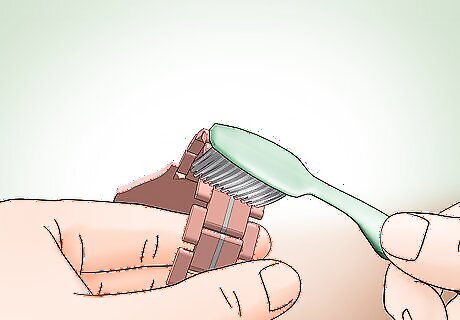
Use a soft-bristled brush to clean hard-to-reach areas. Crevices in a watchband, filigrees, or other engravings can hold oils and dirt that are difficult to reach. To get into those hard-to-reach spaces, use a very soft-bristled brush like a make-up brush or a baby toothbrush.
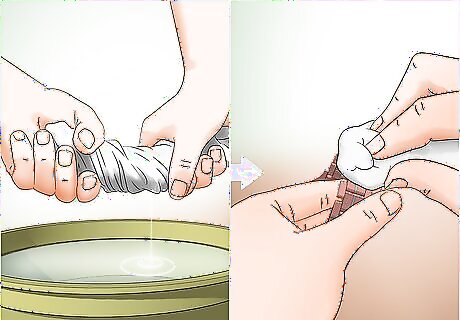
Wash away the cleaner with a lightly damp cloth. To rinse, begin by running a lint-free cloth under lukewarm water. Then, wring it out well until you get most of the moisture out and it is no longer dripping. Rub the lightly dampened cloth over the surface of the item you are cleaning until you are confident there is no cleaner left behind.
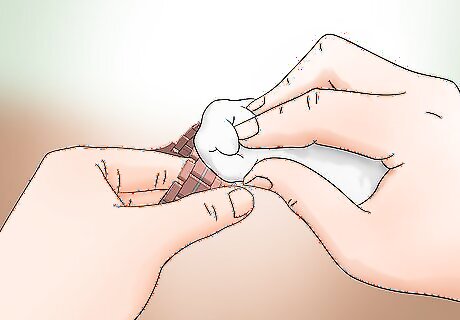
Dry the item with a lint-free cloth to prevent water spots. Run a lint-free cloth like those used for eyeglasses over the item until all the water has been dried up. Make sure you remove any moisture to prevent water spots or a dull finish.











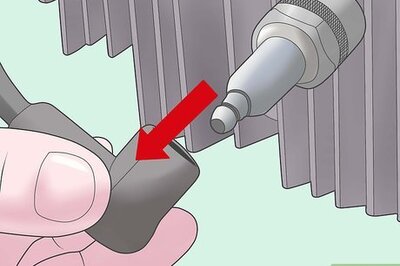








Comments
0 comment